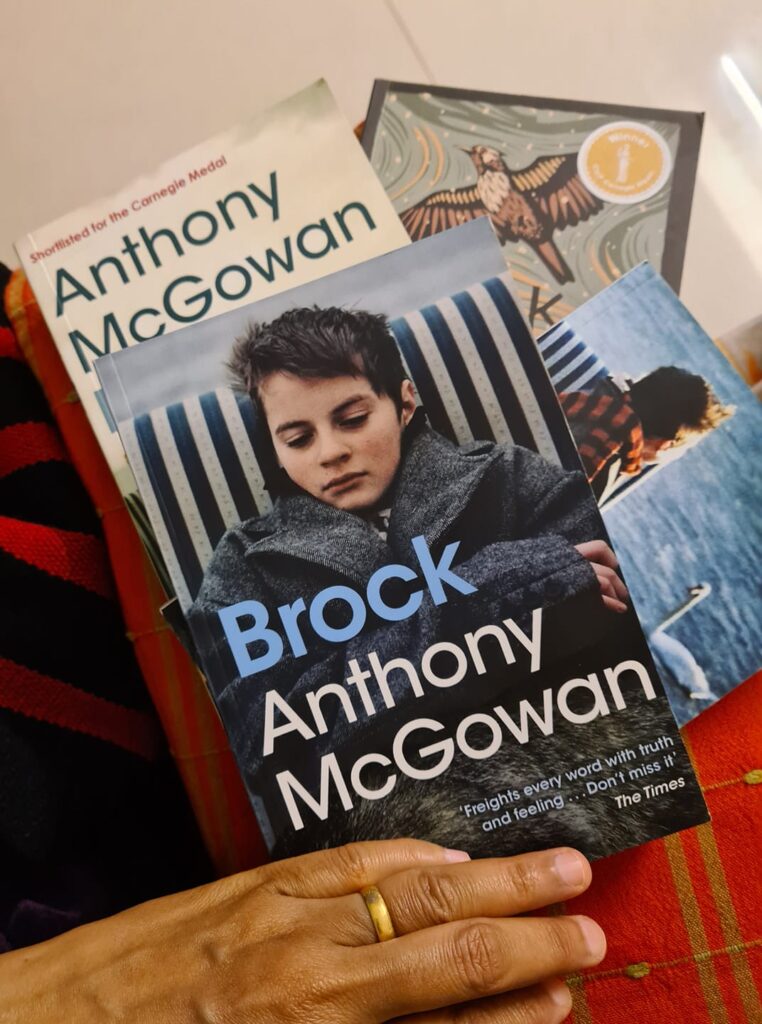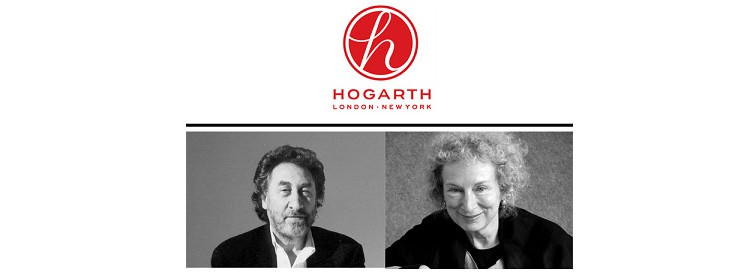Anthony McGowan’s “The Truth of Things”Quartet

And then I heard the sound. The mad, ecstatic music of the lark. I peered into the brightness and saw the small hird straining upwards, its flight not like the easy, carefree swooping of the shallows and swifts. The lark’s flight was all effort, as if hauling itself up by sheer will — a wanting, a yearning. To fly and to sing was work, it was grit. And it was beautiful. And then the lark flew so high it escaped the earth’s gravity, and suddenly flying was no effort at all.
p.96 Anthony McGowan Lark
I absolutely loved these books. I Read Brock, Pike, Rook and Lark in less than a day. Best way to read the stories about the two young boys, Nicholas and Kenny. It is difficult at times for the brothers since Kenny may be the older of two but is also a special needs child.
These are extraordinary stories that simply tell adventures that these young boys have. Nothing in the style of Famous Five or Five Find-Outers. These are stories about ordinary boys from a working class background who are struggling at many levels beginning with the basic one of having a proper meal to eat. Their father is a single parent who has had an alcohol problem but slowly works his way out of it and begins working in a hospital as the equivalent of a ward boy and enjoys his job. It is hard work that does not pay much. His sons learn to fend for themselves like facing up to bullies, looking out for each other, etc. There is so much to gain from these seemingly simply told stories even with their gut wrenching moments.
These are stunning stories as despite reflecting upon the trials and tribulations of the boys, these stories offer hope, joy and the possibility of improving one’s life, step by step, with grit. Life has its hardships but it also has its moments of pure love and happiness. Something that the boys’ father discovered when he met his girlfriend Jenny. The positivity it exuded in the nuclear family had a transformative impact on the three men.
Each story improves upon the previous one but Lark really soars. It is stunning in its detailing of the landscape and its focus upon the brothers relationships. So much is packed in such few pages. Absolutely stunning!
These are stories that have apparently been edited for 9+ and above. The font used is also dyslexic friendly. It is definitely something that children worldwide could benefit from reading.
Buy it. Read it. Share it.
After I wrote this review on Facebook, Anthony McGowan messaged. Here is our conversation:
AM: Oh, what a lovely thing to say – thanks, Jaya! (I’m a bit worried there may be some continuity issues between the different volumes…)
JBR: I doubt there are continuity issues since you have written “bridging passages” in each book. Each passage quickly recaps the previous stories or there is a passing reference to a significant moment. There were only two instances where I wondered what happened and these were — 1) The complete disappearance of Samit and Tina’s former owners, the twins. There is no mention of them in subsequent stories but I merely attributed the lapse to it being a kids story and kids tend to move on. 2) In the previous books it is very clear that Nick and Kenny moved to this present home from another one after their mother left them. It is the same home which their dad visits where the present owners have kindly preserved the correspondence arriving from their mother in Canada. But in Lark there is a mention to the family having lived in many homes previous to this one. Again something that is easily glossed over since this book will probably be read by itself rather than in conjunction with the others. In all likelihood, it will be prescribed by many schools as a compulsory text to be read as there is so much to unpack in this story. So the lapses in some parts of the continutiy are so minor in detail that they hardly impact the storytelling.
In fact, the stories are so well told that it is impossible to put the books down. I was just very glad that I had the pile to read, all at once. One of the best ways to end an otherwise very bleak year!
Also sharing the box of Quality Street toffees as an extraordinary treat even when their father was going through financial hardships or having a jam and cheese sandwich were such lovely little details. Btw, the sandwich combination may be yukky for many but it is a combination that my dad intrduced me to and I still enjoy it. It isn’t bad at all!
AM: Oh, drat, well spotted! Those are certainly issues I should have ironed out. I suppose I can blame my narrator, Nicky – he’s looking back on these events from the future and his memory, like mine, is fallible! One thing that might interest you concerns the character of Mog in Pike. He’s actually a major character in my first Barrington Stoke book, The Fall. I leave him in a terribly dark place at the end of that book (it’s easily my most depressing), and I always felt guilty about it. So I gave him salvation in Pike.
JBR: Oh nice! I did wonder about Mog. I wanted to know more about him. Perhaps he can return in a standalone novel of his own? He really has a Dickensian quality about him. Worth exploring.









